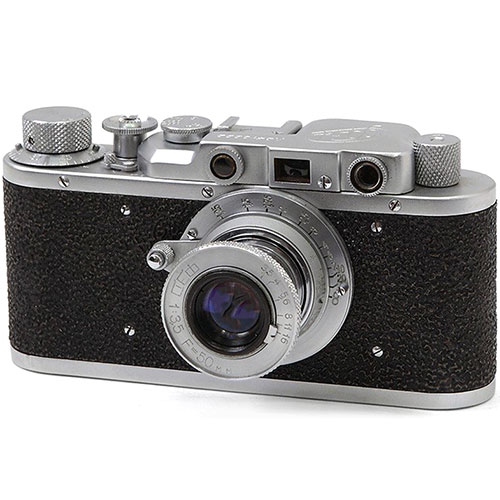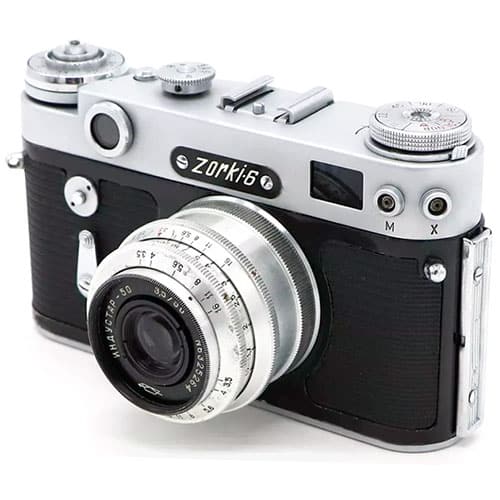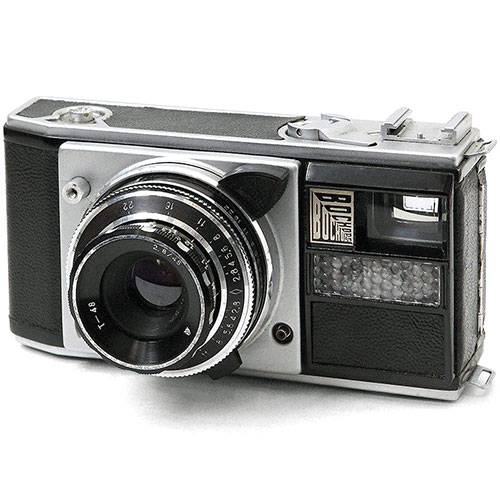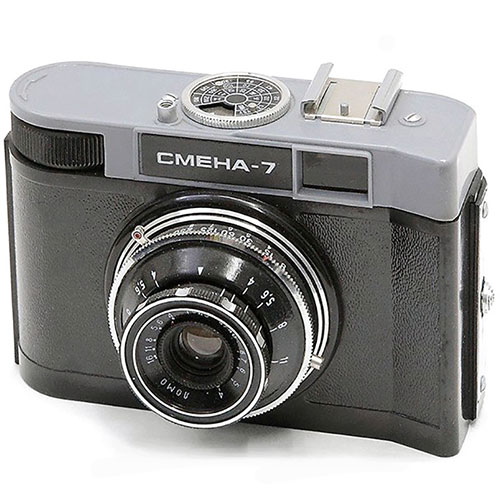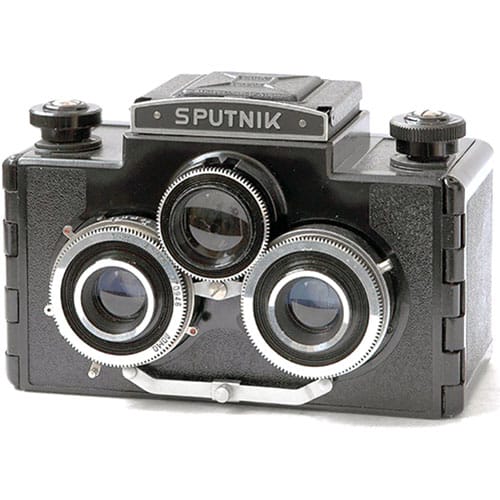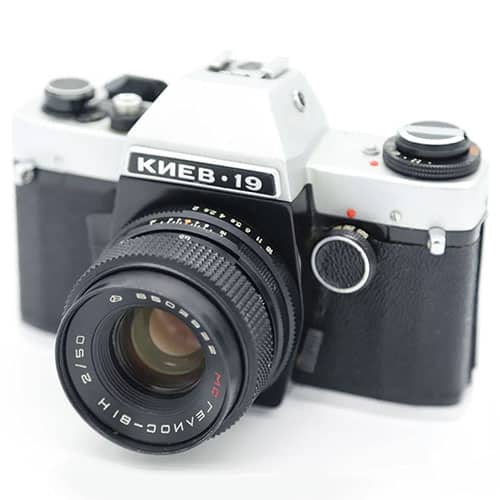ARFO-2a
The large-format Soviet camera ARFO-2a was produced from 1933 to 1938. This camera has practically no differences from the ARFO-2 model.
The ARFO-2A is a 9×12 plate folding camera. Focusing is achieved through a ground glass with a lever drive located in front of the slides on the lens board.
Additionally, focusing can be done using the distance scale. Unlike more advanced large-format cameras, this Soviet model does not feature double-extension bellows.
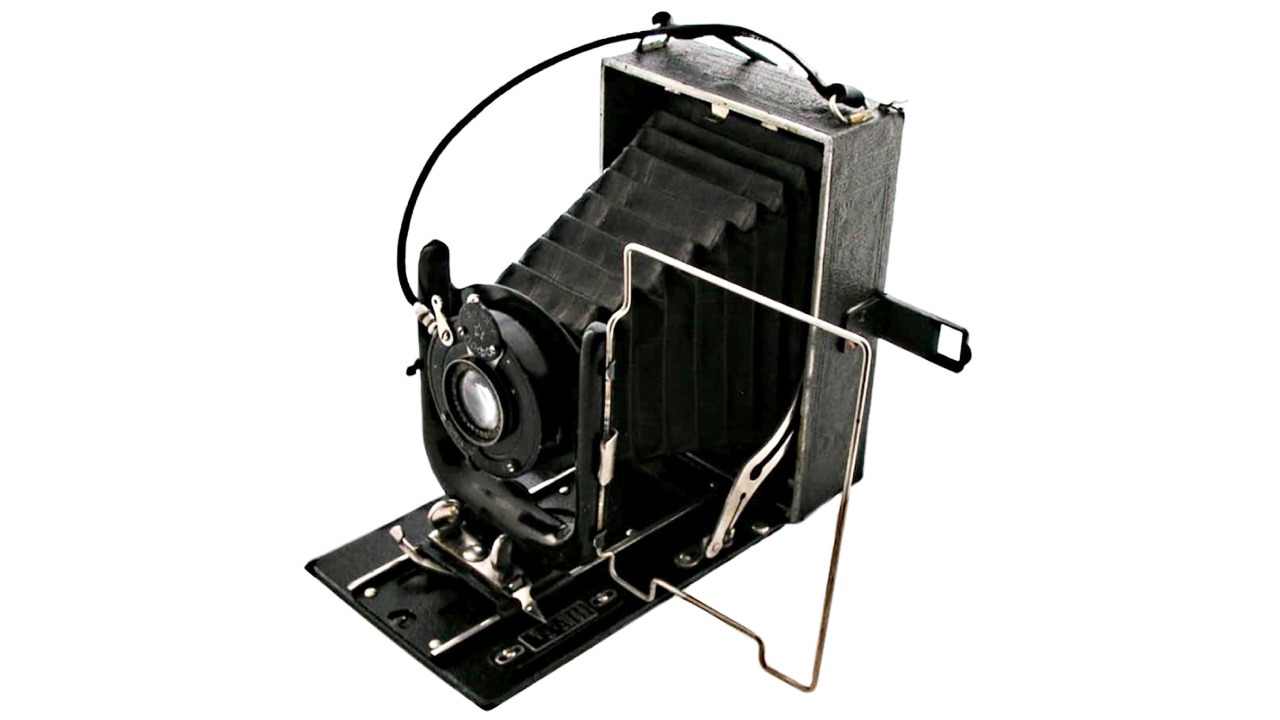
ARFO-2a Specifications
- Type: 9×12 folding camera
- Manufacturer: Foto-Trud
- Production period: 1937–1938
- Format: 9×12 cm
- Lens mount: fixed
- Lens: ARFO Anastigmat f/6.3 135 mm
- Shutter: leaf shutter with speeds of 1/25, 1/50, and 1/100 sec, plus B and T
- Viewfinder: ground glass
- Light meter: none
- Flash synchronization: none
- Self-timer: none
- Weight: 900 g

ARFO-2A Lens
The ARFO-2A camera is equipped with an Anastigmat ARFO lens with an aperture of f/6.3 and a focal length of 135 mm. This lens is relatively simple in construction but was adequate for general photographic purposes of its time.
The diaphragm provides a range of aperture settings from f/6.3 to f/32, allowing basic control over the amount of light entering the camera.
While this range is not particularly advanced, it was sufficient for typical photography tasks in the 1930s. The lens is permanently mounted, meaning users could not change lenses to achieve different optical effects.
The minimum focusing distance is approximately 1.5 meters, which suited general-purpose shooting but limited close-up photography.
Unlike modern lenses that often feature advanced coatings and optical elements to reduce aberrations, the ARFO lens reflects the technological constraints of its era.
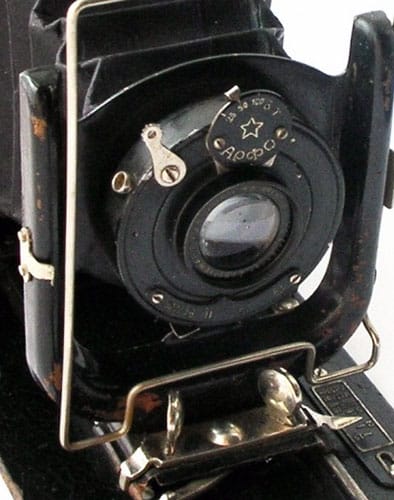
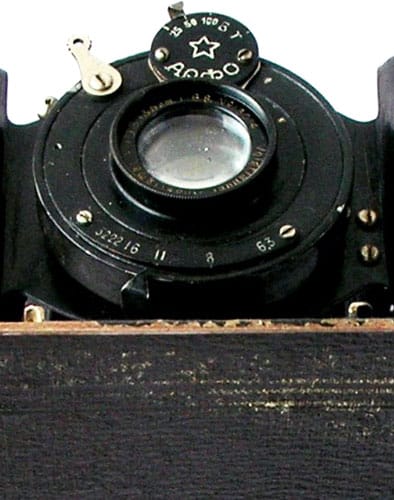
ARFO-2A Shutter
The ARFO-2A features a central leaf shutter that provides basic functionality with speeds of 1/25, 1/50, and 1/100 seconds, as well as B (bulb) and T (time) modes.
These settings allowed photographers to adjust exposure according to lighting conditions, though the limited range restricted flexibility for faster or slower shutter speeds.
For example, the maximum speed of 1/100 second often struggled to freeze motion effectively, while longer exposures relied heavily on manual control using the B and T settings.
The shutter design did not require pre-cocking, which simplified operation, but pressing the release lever compressed a spring, creating resistance that could cause camera shake. For this reason, a tripod and cable release were often essential accessories, even for shorter exposures.
Despite these limitations, this shutter design was fairly typical for cameras of its time and was adequate for the slower, methodical photographic processes common in the 1930s.
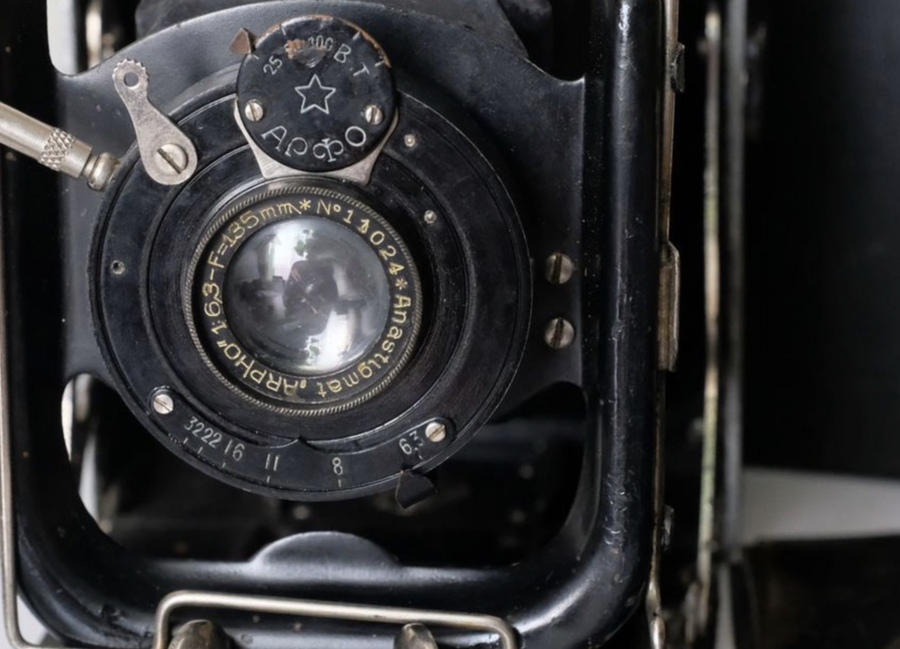
ARFO-2A Body
The body of the ARFO-2A is compact and portable, designed to fold neatly into a rectangular shape with a single-extension bellows.
Made primarily of metal, the body is covered with embossed leather, which includes decorative elements and the model name “ARFO-2A”, as on earlier EFTE cameras.
This design provides a combination of durability and aesthetics, though the materials used were prone to wear and corrosion.
Even well-maintained examples often show signs of metal deterioration, with rust spreading beneath the surface and causing flaking or swelling.
The folding mechanism allows the camera to fit into a large pocket or small carrying case, making it convenient to transport despite its weight of approximately 1 kilogram.
The design also includes a leather carrying strap for ease of handling, though its positioning varied between models. While the camera was functional for its time, many elements of the body design feel crude or underdeveloped, such as the locking mechanisms for the lens board and ground glass back, which are often stiff or unreliable.


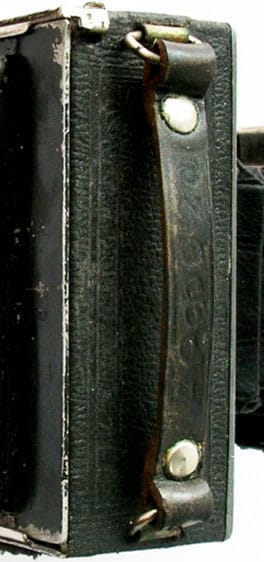
Ease of Use
Using the ARFO-2A requires a deliberate and methodical process, typical of large-format cameras from the pre-war period.
Focusing can be done in two ways: either by using the ground glass on the back of the camera or by relying on the distance scale on the lens board.
Preparing the camera for operation involves unfolding the lens board, extending the bellows, and setting the focus.
Shooting with the ground glass involves additional steps, such as removing the ground glass back and inserting a film cassette.
While these procedures may seem complex by modern standards, they were typical for cameras of this type and era. This camera is best suited for slow, tripod-based photography, as handheld use can result in motion blur.
The shooting was carried out on a photographic plate installed in a removable cassette, which was installed instead of a cassette with ground glass, as in all similar large-format folding cameras.

To bring the camera to the working position, you need to press the button on the top of the body and flip down the lens cover. Then, holding the special plates, pull the lens forward along the runners on the cover.
For modern photographers, the process of working with this large-format soviet camera can seem very complicated and lengthy.
But of course, in those days it was considered something ordinary, and most of the cameras of those years had a similar principle of operation.

Conclusion
As with the EFTE and ARFO-2 cameras, this large-format USSR camera is a rather interesting camera. And as with most other cameras, ARFO-2a is a copy of German cameras.
But unfortunately, it’s quite difficult to find these cameras in good condition and at a low price.
For contemporary photographers, the ARFO-2A and similar early Soviet large-format cameras are primarily of interest as collectible items rather than practical tools.
As we’ve already discussed in other articles about the very first Soviet large-format cameras, the Fotokor-1 is much better suited for photography today.
Nonetheless, the ARFO-2A can still be used to take photographs. Despite its limitations, when paired with the right photosensitive plates, this camera is capable of producing unique and interesting images.


